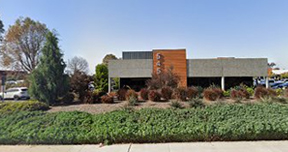Law Firm Representing Victims of Carbon Monoxide Poisoning
Carbon monoxide‚ or CO‚ is a colorless‚ tasteless‚ and odorless gas that is produced by many fuel-powered machines in the world today. While this gas can be harmless when present in an outdoor environment‚ it can quickly turn deadly when enclosed indoors. Because it lacks distinct features that a person’s senses can detect‚ it can easily affect a subject‚ quickly causing damage to the heart and nervous system that can lead to death after a large amount or long-term exposure. Due to the toxic nature of the gas and a lack of oxygen in victims’ bodies‚ permanent damage may result.
When such an incident occurs due to another’s negligence or a defective product‚ those at fault can be held liable for the injuries that ensue. At the Jurewitz Law Group Injury & Accident Lawyers‚ San Diego carbon monoxide poisoning victims can find quality legal representation that will represent them in court and win the compensation they need to recover from their losses.
What Are Common Causes of Carbon Monoxide Poisoning?
Carbon monoxide is produced by many common items in homes around the world. When these items are negligently used or defective‚ CO poisoning can easily result. Some of these products are:
- Propane-powered heaters and stoves
- Kerosene space heaters
- Any gasoline-powered engine in motor vehicles‚ such as cars‚ motorcycles‚ and boats
- Spray paint‚ solvents‚ paint removers‚ and degreasers
- Gas water heaters
- Charcoal grills
- Generators that run on gasoline or diesel fuel
Many of these items are meant to be used outdoors in order to prevent a buildup of carbon monoxide. However‚ when they are used in or close to an indoor space‚ such as leaving a car running in a home’s garage‚ CO can quickly build up in enclosed spaces and poison those nearby.
CO Poisoning Symptoms
While carbon monoxide must build up in a person’s system to damage the brain or organs‚ symptoms can begin very quickly and are a telltale sign of poisoning and a possible CO leak. Symptoms of CO poisoning include:
- Headache‚ dizziness‚ confusion‚ agitation‚ drowsiness‚ depression‚ and/or nausea;
- Chest and/or abdominal pain;
- Flu-like symptoms‚ such as fatigue;
- Memory and walking problems;
- Impaired judgment;
- Hallucinations;
- Shortness of breath during exertion; and
- Fainting and/or seizure.
Any and all of these are symptoms that a person is experiencing carbon monoxide poisoning. If this occurs‚ everyone present should leave the area‚ go outdoors and dial 911 for emergency medical treatment. Carbon monoxide poisoning can be successfully treated when diagnosed quickly and permanent damage can be prevented by swift action.
What is the difference between carbon dioxide (CO2) and carbon monoxide (CO)?
The main difference between carbon dioxide and carbon monoxide is that carbon dioxide is non-toxic, while carbon monoxide is toxic. A carbon monoxide molecule has one oxygen atom and one carbon atom, while a carbon dioxide molecule has two oxygen atoms and one carbon atom.
Carbon monoxide can readily combine with a free oxygen atom to become carbon dioxide. If a carbon monoxide molecule cannot find a second oxygen atom to react with, it can react with something else that has the chemical reaction properties of oxygen. Most humans can tolerate high carbon dioxide concentrations, but carbon monoxide binds to hemoglobin and blocks it from carrying oxygen.
What are the symptoms of carbon monoxide poisoning?
Carbon monoxide deprives the heart, brain, and other vital organs of oxygen, causing headache, fatigue, shortness of breath, nausea, dizziness, mental confusion, vomiting, upset stomach, chest pain, loss of muscular coordination, loss of consciousness, confusion, and possibly death. Many symptoms are described as “flu-like.” It can also cause a rise in blood pressure and may turn a person’s skin pink or red.
How can I prevent carbon monoxide poisoning in my home?
The CDC recommends that you install a battery-operated, or battery back-up, carbon monoxide detector in your home. You should check or replace the battery when you change the time on your clocks each spring and fall.
You also want to place a detector somewhere that will wake you should it alarm. The CDC recommends buying a detector with a digital readout, which can tell you the highest level of carbon monoxide concentration in your home in addition to making an alarm sound.
The CDC says a carbon monoxide detector should be replaced every five years, and you should also get your heating system, water heater, and any other gas, oil, or coal-burning appliances serviced by a qualified technician every year. When you smell an odor from a gas refrigerator, allow an expert to service it as this could be a sign of leaking carbon monoxide.
The CDC also recommends only buying gas equipment carrying the seal of a national testing agency like Underwriters’ Laboratories. Gas appliances need to be vented properly to prevent carbon monoxide from leaking if the joints or pipes aren’t fitted tightly. Chimneys need to be checked or cleaned every year because they can be blocked by debris that causes carbon monoxide to build up inside your home or cabin.
The CDC also states that you should never patch a vent pipe with tape, gum, or something else, and you should also never use a gas range or oven for heating as this can cause a buildup of carbon monoxide inside your home.
The CDC also says you should never burn charcoal indoors, use a portable gas camp stove indoors, or use a generator inside your home, basement, or garage or less than 20 feet from any window, door, or vent. If you are using a generator, make sure there is a battery-powered or battery-backup carbon monoxide detector in your home.
How can I avoid carbon monoxide poisoning from my motor vehicle?
The CDC recommends having the exhaust system of your vehicle serviced by a mechanic every year, as even a small leak can cause a buildup of carbon monoxide in a vehicle. Do not run a vehicle in a garage even if the garage door is open. Vehicles with tailgates need to have tailgates, vents, or windows open to keep air moving through.
Are there places that I should not install carbon monoxide alarms?
Try to avoid installing carbon monoxide detectors in dusty, dirty, humid, or greasy areas. Also, avoid installing them in direct sunlight. Do not install them in alcoves in which they may be covered by curtains or other obstructions. Lastly, do not install detectors near ceiling fans, heat vents, air conditioners, fresh air returns, and open windows as blowing air can prevent carbon monoxide from reaching the transmitter.
Carbon Monoxide Poisoning Statistics
The Centers for Disease Control and Prevention (CDC) reported that at least 430 people die from accidental carbon monoxide poisoning in the United States annually. Another 50,000 Americans visit emergency departments annually because of accidental CO poisoning.
According to the CDC, there were 2,244 deaths caused by unintentional carbon monoxide poisoning from 2010 to 2015, and the winter months accounted for the most deaths every year. In 2015, 36 percent of the 393 deaths that year caused by unintentional carbon monoxide poisoning occurred in December, January, or February.
The CDC also reported that between 1999 and 2010, there were 5,149 deaths from unintentional carbon monoxide poisoning in the United States or an average of 430 deaths per year. The 0.22 per 100,000 population average annual death rate from carbon monoxide poisoning for men was over three times higher than the rate of 0.07 for women.
According to the CDC, death rates were highest among individuals 65 years of age or older for men (0.42) and women (0.18), but the rates were the lowest for men (0.08) and women (0.04) less than 25 years of age.
A 2015 study, “Carbon monoxide poisoning deaths in the United States, 1999 to 2012,” used 1999 to 2012 data to calculate death rates and identified 6136 carbon monoxide poisoning fatalities resulting in an average of 438 deaths annually. The study found that 54 percent of the deaths occurred in a home, and the age-specific death rate was highest for individuals 85 or more years of age (6.00 deaths per million).
In March 2017, the American Council on Science and Health published an article entitled “Carbon Monoxide Kills More Americans Than Mass Shootings, Terrorism Combined.” The article stated that the mortality rate from carbon monoxide poisoning was 1.2 deaths per one million Americans, while the mortality rate for mass shootings could vary from just under 0.25 deaths per one million to 0.59 deaths per one million, and the mortality rate from terrorism was a meer 0.06 per one million people.
Dedicated Legal Representation in San Diego
Carbon monoxide poisoning is an incredibly serious issue that affects thousands of people in the United States every year‚ putting victims at risk of serious health issues and even death. Those who suffer CO poisoning and the families of those who have died due to another party’s negligence or a defective product have the right to seek compensation for their injuries and losses and hold at-fault parties responsible for their actions. The Jurewitz Law Group Injury & Accident Lawyers’s San Diego injury attorneys are dedicated to winning just and full compensation and obtaining justice for injured victims. Contact our law team today at (619) 233-5020 or (888) 233-5020 if you or a loved one has suffered the effects of carbon monoxide poisoning and you would like more information on how we can help.


